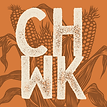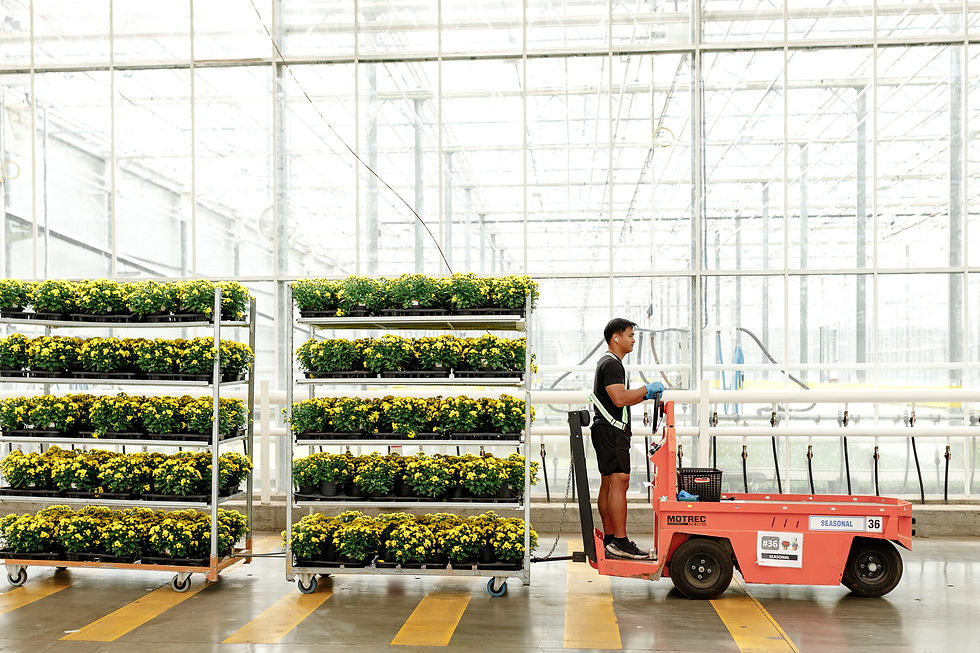Sustainability Blooming at Quiks Farm
- Farm Story Feature
- Nov 10
- 3 min read
At Quik’s Farm in Chilliwack, sustainability is a familiar word that the Quik brothers recognize not just as a buzzword, but as a business model. Being one of Western Canada’s largest cut flower growers, the Quik family understands that their long-term success depends on their ability to manage their environmental footprint. They use various systems ranging from irrigation to efficient greenhouses and believe that investing in ethical and sustainable practices helps protect resources while supporting consistent year-round production.
Smarter Water Use
Water is essential to any greenhouse operation, but it’s also one of the most regulated and costly inputs in agriculture. At Quik’s farm, water is tracked and optimized through a closed-loop system that collects, filters, and recycles irrigation runoff. This system reduces waste and protects local waterways from nutrient runoff. The team adjusts watering levels based on real-time climate data and crop needs. Sensors also help monitor the soil’s moisture and environmental conditions to ensure that every liter of water is used efficiently. This use of water allows Quik’s farm to maintain better flower quality while maintaining lower water consumption per square foot.
Lighting That Works
Quik’s greenhouses use strategic ways to project light onto the plants, specifically during the darker months. They rely on Chilliwack’s natural light but turn to supplemental lighting during the darker months. One specific tool that the farm uses is LED lighting systems. These lights allow crops like Spraymums, Disbud Mums, and Lisianthus to grow under stable conditions,even during cold months such as winter. Compared to traditional high-pressure sodium or HPSlights, LEDs consume less energy and produceless excess heat. This reduces the need for electricity and supports healthier plant growth without an over-reliance on artificial inputs. By using LED lighting, the farm can further optimize photosynthesis while minimizing stress on both the plants and the energy consumed.
Sustainable Inputs and Local Impact
The farm sources many of its inputs such as soil and plant trays from nearby suppliers to cut down on transport emissions. Their pest control strategies also focus on biological interventions to reduce chemical pesticide use. For example, Quik’s farm releases Swirksi mites, which come in a small bottle, as a part of their biological best practices to ensure healthy soil and blooms.These mites eat the “bad” spider mites, which saves the farm from using harsh chemical introductions to the plants. Quik’s also composts green waste from production and packaging areas, closing the gap on the plant material that doesn’t make it into the market. These sustainably conscious decisions ultimately lower greenhouse gas emissions and keep the farm compliant with evolving agricultural regulations.
In an industry often criticized for waste and overuse of carbon, Quik’s Farm is pushing back with measurable, practical changes. Their approach is about daily operation discipline and making thoughtful choices in everyday irrigation lighting, waste management, and pest control. Quik'sFarms proves that large-scale operations can align with environmental responsibility while remaining successful.
The Future of Sustainability for Quiks
For Quik’s, sustainability doesn’t only revolve around the topic of the environment, but it's about business resilience. As energy costs, water and availability, and environmental regulations fluctuate across B.C., the systems put in place give the farm the ability to be adaptable and control some of these pressured factors that can impact the farm for better or for worse.Chilliwack’s agricultural world is having to adapt to a changing climate and growing population.Farms like Quik’s are already setting that standard—one recycled drop of water, one healthy plant, and one harvest at a time.











Comments